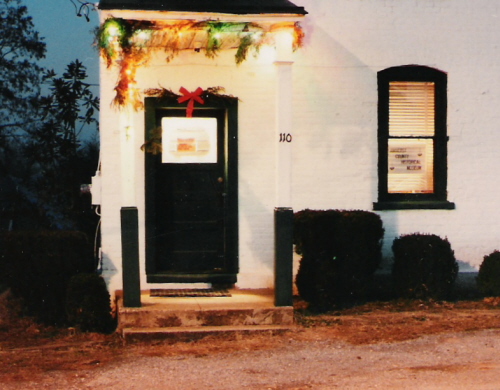HistoryHistory of Amherst CountyNative Americans were the first humans to populate the area. They hunted and fished mainly along the countless rivers and streams in the county. With the establishment of the Virginia Colony in 1607, English emigrants arrived in North America. By the late 1600's English explorers and traders traveled up the James River to this area. Early trading posts formed between 1710 and 1720. By 1730, many new families moved into the land currently known as Amherst County drawn by the desire for land and the good tobacco-growing soil. In 1761, Amherst County was formed from the southern half of Albemarle County. The original county seat had been in Cabelsville, now Colleen in what would later become Nelson County. The county was named for Sir Jeffrey Amherst who commanded the British forces that successfully secured Canada from the French. In 1807 the county assumed its present proportions when Nelson County was formed from its northern half. At that point, the county seat was moved to the village of Five Oaks, later renamed Amherst. The present county courthouse was built in 1870 and has served the county ever since. In the early days the major crop raised in Amherst County was tobacco with apple orchards becoming popular in the late 19th century. Timber, mining and milling were also important industries. The introduction of the railroad in the late 19th century greatly influenced the county's growth. The county contains many good examples of 18th, 19th and early 20th century rural and small town architecture. The downtown area of Amherst is a classic example of early 20th century commercial architecture. History of the Amherst County Museum and Historical SocietyThe Amherst County Museum was founded in 1973 by a small group of concerned persons and is today an incorporated body with a membership of over 350 individuals, families, clubs and businesses. It is run by a full time Director, an executive board and people who graciously volunteer their time. The museum serves the county schools, churches and civic organizations and all of the citizens of central Virginia through lectures, exhibits, school programs, and publications. The Old Amherst County Jail
The Amherst County Museum first opened its doors on May 30, 1976. The museum was originally housed in the old county jail which was built in 1891-92 adjacent to the county courthouse. The old jail contained two exhibit rooms on the ground floor. Two jail cells used for storage of artifacts and two rooms on the second floor were used for office and storage/exhibit design. This small building was the home of the museum until 1992 when the Museum moved into a larger home on Main Street in Amherst. The Kearfott-Wood House The Amherst County Museum & Historical Society is now located in the Kearfott-Wood House on South Main Street in Amherst Virginia. This building is a Georgian Revival or American Four Square style house built in 1907. It was built by a local pharmacist, Dr. Joseph Kearfott, who had his business at the same location as the present-day Amherst Pharmacy on Main Street. Dr. Kearfott and his family lived in the house until 1920. Mr. Wade Wood, who owned a grocery store in Amherst for 60 years, purchased the property in 1922. Mr. Wood's two daughters grew up here and the house was the scene of many activities including Sunday afternoon croquet matches. After Mr. Wood passed away in 1960, his wife, Molly, sold the property to Farmers & Merchants Bank, reserving life estate. The house was unoccupied from 1967 - 1977 and was used for storage by the bank until the museum purchased the property in 1988. The museum moved into its new home in 1992. It currently contain four rooms on the first floor that are open to the public. Two of the rooms offer changing exhibits on the history and local culture of Amherst County. Another room contains Amherst County Pathways, our exhibit on the history of Amherst County and is a permanent fixture at the Museum. The fourth room is our research and genealogy library filled with material on the history of Virginia, local history and family information that may be used for research purposes. The Tyler Log School Behind the museum building is the Tyler Log School, which was moved onto the property from its original location in the town of Madison Heights. The school was built about 1885 by Mr. Fielden B. Tyler on his property, the "Duckbill Farm". The building, called the "schoolhouse" or the "school in the grove," was used by Mr. Tyler's and his neighbors' children until the early 1900's. Mr. Tyler was a member of the Amherst County Board of Supervisors and it was at his urging that the first public school in the county was built. This two-room school was named the Tyler School in his honor. Mrs. Sally Lee Hunt was the first teacher at the log school and her first students were Scott Hunt, and Jesse and Fannie Tyler. During the use of the log school, Libby Kidd, David E. Lewis, John Lewis Tyler II, Eva Wood and Selma Wood were also students there. Fielden B. Tyler (1842-1921) married Lucy Mary Wingfield (1857-1898) in 1877. They had three children, Jesse W. (1878-1941), Fannie F. (1881-1959) and John Lewis II (1886-1942). The "Duckbill Home" was built about 1820-25 for James Lamkin and had several owners before Mr. Tyler bought the property. |
